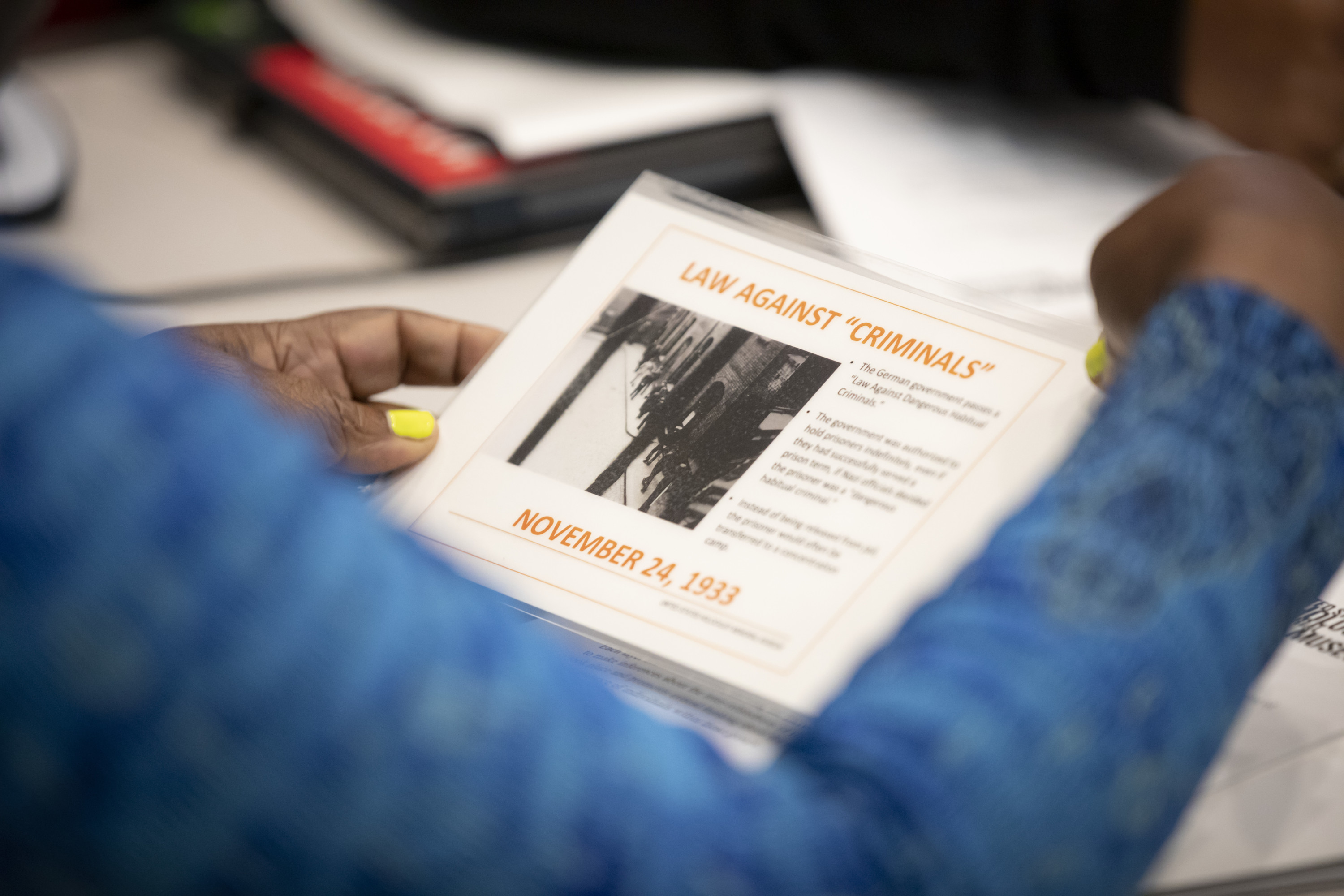By examining the Wagner-Rogers Bill of 1939, students learn how Americans debated the country’s role as a haven for refugees, identifying economic, social, and geopolitical factors that influenced Americans’ attitudes about the United States’ role in the world during the critical years 1938–1941. Using primary-source documents, students identify and evaluate arguments that Americans made for and against the acceptance of child refugees in 1939. The lesson concludes with reflection on questions that this history raises about America’s role in the world today.
< Holocaust Lesson Plans
Lesson: Immigration and Refugees, A Case Study on the Wagner-Rogers Bill
This Section
Teach

Teaching Materials
Explore lesson plans and training materials organized by theme to use in your classroom.
- Fundamentals of Teaching the Holocaust
- Holocaust Teaching Guide: Getting Started
- Foundational Teaching Materials
- Guidelines for Teaching About the Holocaust
- Rationale and Learning Objectives
- Age Appropriateness
- Teaching About the Holocaust Online
- Bibliography and Videography
- Holocaust Education in the United States
- Frequently Asked Questions about the Holocaust for Educators
- Teaching Materials by Topic
- Teaching Materials on the Holocaust
- Teaching Materials on Americans and the Holocaust
- Teaching Materials on Antisemitism and Racism
- Teaching Materials Using Books and Literature
- Teaching Materials on Propaganda
- Teaching Materials on the Roles of Individuals
- Teaching Materials on the Role of the Military
- Teaching Materials Using Primary Sources and the Museum’s Collections
- Teaching Materials on Nazism and Jim Crow
- Hard Copies of Teaching Materials
- Holocaust Lesson Plans
- Lesson: Introduction to the Holocaust (One-Day Lesson)
- Lesson: Overview of the Holocaust (Two- and Four-Day Lessons)
- Lesson: Holocaust Timeline Activity
- Lesson: Teaching with Holocaust Survivor Testimony
- Lesson: The Path to Nazi Genocide
- Lesson: History of Antisemitism and the Holocaust
- Lesson: Exploring Pre-World War II Jewish Life
- Lesson: Exploring Holocaust-era Diaries
- Lesson: Nazi Racism
- Lesson: Understanding Nazi Symbols
- Lesson: Americans and the Holocaust Exhibition Tour and Viewing Guide
- Lesson: Analyzing Memes
- Lesson: Behind Every Name, Stories from the Holocaust
- Lesson: Black Americans and the Nazi Olympics
- Lesson: Black Press Newspaper Coverage of the Holocaust (History Unfolded)
- Lesson: Connecting the Timeline Activity to The Path to Nazi Genocide
- Lesson: Challenges of Escape, 1938–1941
- Lesson: Critically Analyzing Propaganda
- Lesson: Diaries as Historical Sources
- Lesson: Exploring Anne Frank’s Diary
- Lesson: Exploring Night as Literature, Bearing Witness to History
- Lesson: Exploring the Americans and the Holocaust Online Exhibition
- Lesson: Exploring Nazi Propaganda
- Lesson: First Person, Conversations with a Holocaust Survivor
- Lesson: Guide to The World Must Know
- Lesson: Hoecker/Auschwitz Albums Photo Analysis
- Lesson: Holocaust Narrative through Historical Photos
- Lesson: Immigration and Refugees, A Case Study on the Wagner-Rogers Bill
- Lesson: Interpreting News of World Events 1933–1938
- Lesson: Isolation or Intervention? A Case Study on the Lend-Lease Act
- Lesson: Modern-Day Genocide, A Study of the Rohingya Minority in Burma
- Lesson: Racial “Science” and Law in Nazi Germany and the United States
- Lesson: The Refugee Crisis
- Lesson: Rescue and Survival in Hiding
- Lesson: Resistance During the Holocaust
- Lesson: Spanish-Language Newspaper Coverage of the Holocaust (History Unfolded)
- Lesson: US Newspapers and the Holocaust (History Unfolded)
- Lesson: Youth Responses to News of the Holocaust (History Unfolded)
- Lesson: Holocaust Literature Guide
- Lesson: Three Minutes in Poland
- Lesson: Exploring the Role of Ordinary People in the Holocaust
- Online Tools for Learning and Teaching
- Key Videos
- Poster Sets
- Professional Learning for Educators
